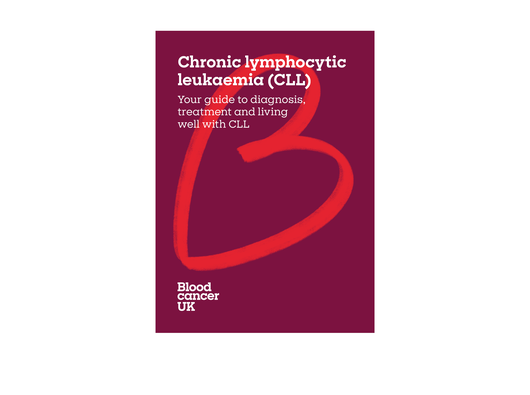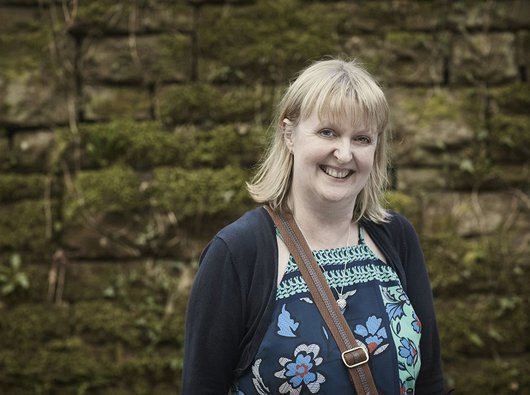CLL (chronic lymphocytic leukaemia) treatment and side effects
CLL (chronic lymphocytic leukaemia) treatment types
Thanks to research there’s a wide range of treatments available for people with CLL.
Treatment for CLL
If the time comes when you need treatment for CLL, your hospital team will recommend one or a combination of these types of drugs:
Inhibitors (cancer growth blockers)
Inhibitors are targeted drugs which block the signals that make cancer cells grow. Inhibitors used to treat CLL include acalabrutinib, ibrutinib, venetoclax and zanubrutinib. Inhibitors are usually taken as tablets over a period of months, or for as long as they continue to control the CLL and any side effects are manageable.
Monoclonal antibodies (immunotherapy)
Monoclonal antibodies are targeted drugs which can bind to and kill specific cells. Monoclonal antibodies for CLL include rituximab and obinutuzumab. They are usually given as a drip (an infusion) in hospital.
Chemotherapy
Chemotherapy drugs work by killing cells that multiply rapidly. They’re usually given along with a monoclonal antibody – this combination is called chemo-immunotherapy. Chemotherapy drugs for CLL include: fludarabine, cyclophosphamide, bendamustine and chlorambucil.
How will my doctor decide on my treatment?
There are several things your doctor will consider when deciding which treatments to recommend:
- Your overall health and fitness – This includes whether you have any other conditions such as kidney or heart problems.
- Genetic test results – Testing for changes in the genes of your CLL cells will help your doctor recommend the best treatment for you.
- Your response to previous treatment – If you’ve had treatment for CLL before, your doctor will look at how well that treatment worked and whether you had significant side effects.
- Practicalities and preferences – Your doctor will also take your personal circumstances into account, such as whether treatment at home or in hospital is better for you.
Your guide to CLL
This free booklet covers:
- treatment options
- what to expect from treatment
- side effects
- questions to ask your healthcare team
You can order it for free from our online shop.

Treatment options
The main drugs and drug combinations for CLL are listed below in alphabetical order. See above for the things your doctor will consider when recommending a particular treatment.
Whatever treatment you have, our online community forum can bring you support from people who really understand. Have a look at what other people are saying, or start your own thread.
Most people will be offered targeted treatment with inhibitors or monoclonal antibodies, or a combination of the two. Not all treatments are currently funded by the NHS and may not be approved in all four countries of the UK. Speak to your hospital team about which treatments are available for you:
Acalabrutinib is an inhibitor. It is taken as tablets.
Acalabrutinib can be used as a first treatment when the CLL shows a particular genetic mutation (genetic change) or when other treatments aren't suitable.
It can also be offered to people who have already had treatment, but the CLL has come back (relapsed or refractory CLL).
Acalabrutinib may be combined with the monoclonal antibody obinutuzumab. Obinutuzumab is given as an infusion (drip). This treatment is for people who haven’t had any previous treatment for CLL. It is not currently available on the NHS.
Ibrutinib is an inhibitor and is taken as tablets. On the NHS, ibrutinib can be used as a first treatment when the CLL shows a particular genetic mutation (genetic change) and other treatments aren't suitable.
It can also be used when the CLL has been treated previously but has come back (relapsed or refractory CLL).
Venetoclax is an inhibitor and is taken as a tablet. It can be offered to people who have already had treatment, but the CLL has come back (relapsed or refractory CLL). When it is taken on its own, it is called venetoclax monotherapy.
Venetoclax and ibrutinib are both inhibitors and are taken as tablets. This combination is for people who haven’t had any previous treatment for CLL.
Venetoclax is an inhibitor and obinutuzumab is a monoclonal antibody. Venetoclax is taken as tablets, and obinutuzumab is given as a drip (infusion).
This combination of drugs is given to people who haven’t had any previous treatment for CLL.
Venetoclax is an inhibitor and rituximab is a monoclonal antibody. Venetoclax is a tablet, and rituximab is given as a drip (infusion).
This combination can be offered to people who have already had treatment, but the CLL has come back (relapsed or refractory CLL).
Zanubrutinib is an inhibitor and is taken as a tablet.
It is an option as a first treatment when the CLL shows a particular genetic mutation (genetic change) or when other treatments aren't suitable.
It can also be offered to people who have already had treatment, but the CLL has come back (relapsed or refractory CLL).
Treatments in special circumstances
These drug combinations are less commonly used but may be an option for some people. Your hospital team will explain why a particular treatment is a good option for you.
Bendamustine is a chemotherapy drug and rituximab is a monoclonal antibody. They are both given as a drip (infusion).
Chlorambucil is a chemotherapy drug and obinutuzumab is a monoclonal antibody.
Chlorambucil is taken as tablets. Obinutuzumab is given as a drip (infusion).
FCR is a combination of chemotherapy drugs called fludarabine and cyclophosphamide, and a monoclonal antibody called rituximab.
Fludarabine and cyclophosphamide are usually taken as tablets. Rituximab is given as a drip (infusion).
Idelalisib is an inhibitor. Rituximab is a monoclonal antibody. Idelalisib is taken as tablets. Rituximab is given as a drip (infusion).
Idelalisib is known to increase the risk of getting serious infections, so people on this treatment will also be given antibiotics.
More information about CLL treatments
The best place to get more information about your treatment is from your hospital team. They will explain why they are recommending a certain treatment and answer any questions you have.
Here are some questions you may like to ask:
- What treatment will I have?
- What is the aim of my treatment?
- Is there a clinical trial I can join?
- How and where will I be given the treatment?
- How long will treatment last?
- What might the side effects be?
- How can I manage these side effects?
- How will treatment affect my daily life?
- What’s the best outcome I can hope for?
- Who do I contact if I don't feel well?
- Who do I contact out of hours?
If you are keen to do your own research on specific drugs, it’s important to find accurate information. Googling often isn’t the best way to do this.
EMC is a website which publishes the Patient Information Leaflets drug manufacturers have to include in their packaging. Search the drug name and then click on the tab that says “Patient Leaflet”.
Be aware that these leaflets list all the side effects that have been reported and can look daunting. But remember that you won’t have all of these side effects and may not have any.
Always speak to your hospital team if you are worried or have any questions about your treatment.
"It's really important to ask questions and build up a rapport with your doctor, as they’re in the best position to allay any fears or concerns."
Kate, living with small lymphocytic leukaemia (SLL) since 2010
Contact our Support Service for advice on talking to your hospital team

Stem cell transplant
A stem cell transplant aims to give patients healthy stem cells, which can then produce normal blood cells. Generally, this is not a suitable treatment for CLL. That’s because the risks of a transplant aren’t justified when you have a slowly developing disease like CLL. A transplant also involves intensive chemotherapy, which is hard to tolerate for people who are older or have other health concerns.
For a few younger, fitter people with faster growing CLL, a transplant may be a reasonable treatment option that could lead to a cure. But the risks of a transplant need to be carefully considered, especially when there are safer treatments available.
People with CLL who need a stem cell transplant will be offered one that uses stem cells from a healthy donor (an allogeneic transplant).
The emotional impact of treatment
It’s normal to feel worried about starting treatment for blood cancer. It may feel like stepping into the unknown, but your hospital team is there to answer all your questions. Be sure to ask about anything that’s on your mind – it’s their job to explain what’s happening.
It can help to share your worries with other people who understand how you’re feeling. You can see what other people are saying about treatment and living with blood cancer on our online community forum.
